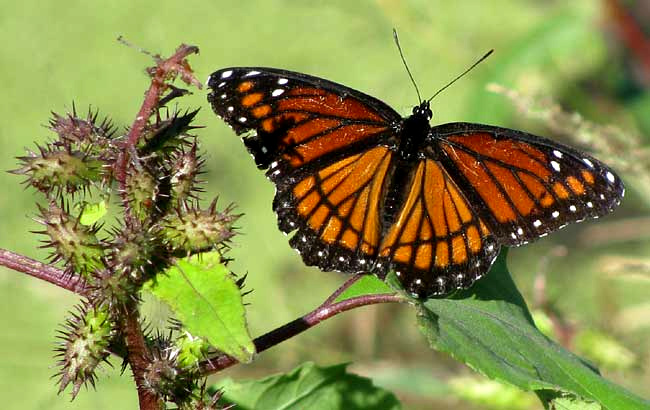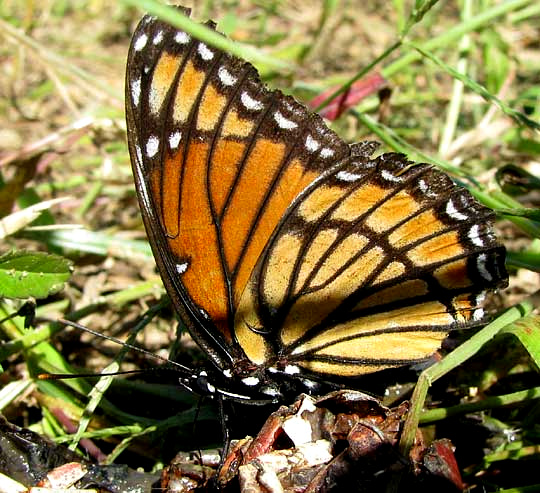Excerpts from Jim Conrad's
Naturalist Newsletter

from the October 25, 2009 Newsletter, from near Natchez, Mississippi
VICEROYS GALORE
Hundreds and hundreds of orange and black butterflies flitted among weeds along the Refuge's narrow gravel roads and perched on the roads themselves. Karen drove slowly and did lots of zigzagging but it was impossible to miss them all. At first I thought they must be migrating Monarchs pausing on their journeys south, but when I got close to one I saw that it was smaller and darker than a Monarch and bore conspicuous black lines across its hindwings, which Monarchs don't have. You can what I saw, on a cocklebur leaf, above.
It's the Viceroy, LIMENITIS ARCHIPPUS, often cited as a classic example "Müllerian mimicry" because of its similarity to the Monarch. Müllerian mimicry is when two or more not-closely-related, "harmful" species (in this case they're both distasteful) share one or more common predators while mimicking one other's warning signals. Both Monarchs and Viceroys benefit from their predators knowing that orange-and-black butterflies tend to be too bitter to eat.
Müllerian mimicry is different from Batesian mimicry in that Batesian mimics are themselves "harmless" but imitate a dangerous species.
A Viceroy's wing undersides as he dines on raccoon poop composed mostly of reddish crawfish shell is seen below:

Why were so many Viceroys down in the swamp last Monday, and why did their favorite perch appear to be cocklebur plants? The Butterflies and Moths of North America website reports that Viceroy caterpillars eat leaves of willows, poplars and cottonwoods. The swamp had these in abundance so that may explain the sheer large numbers, but what about the cockleburs? The website also says that early in the season adult Viceroys feed on aphid honeydew, carrion, dung, and decaying fungi but later -- now -- feed more often on flowers in the Composite Family. Well, cockleburs were the most abundant members of the Composite Family along the roads that day, so I guess it all makes sense.